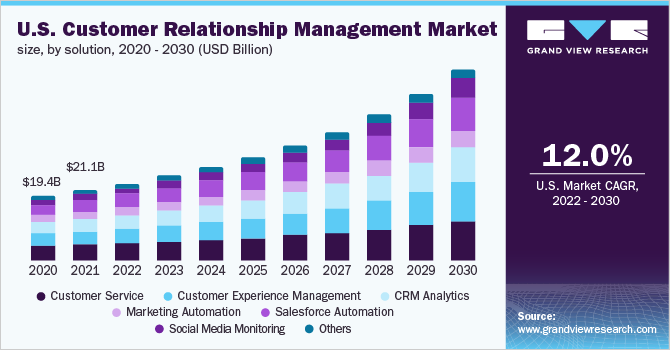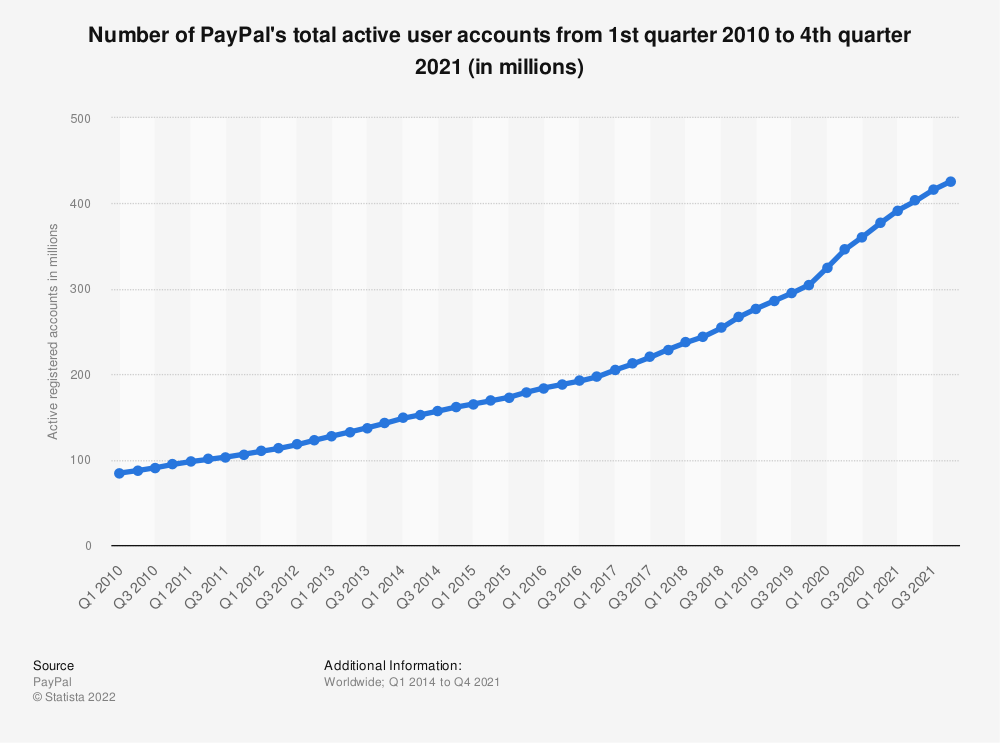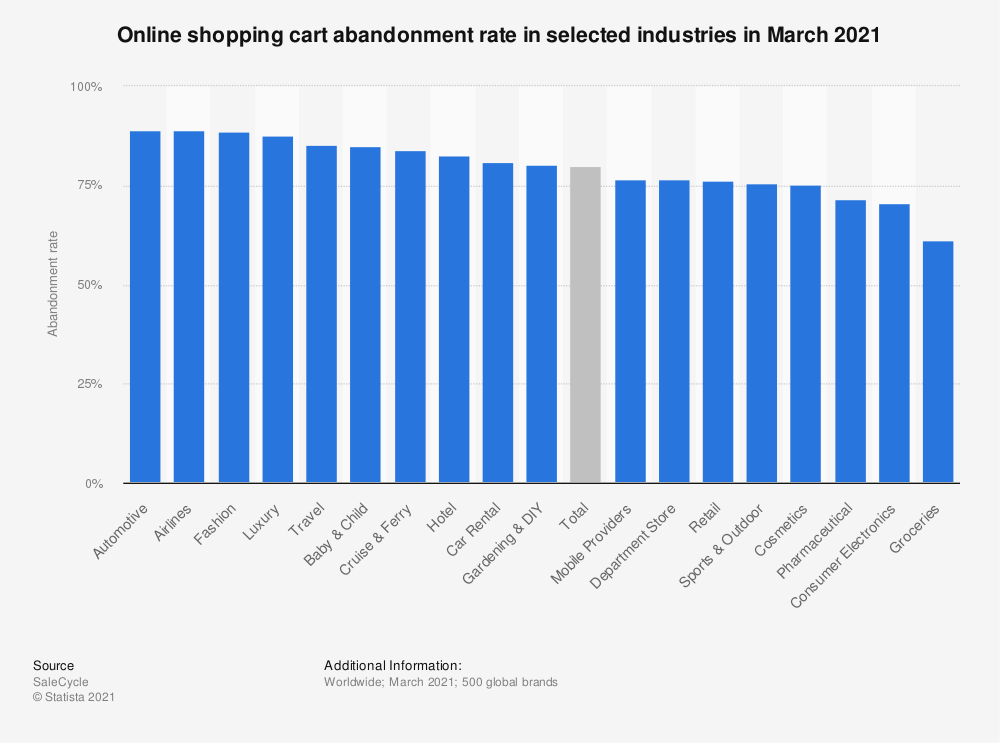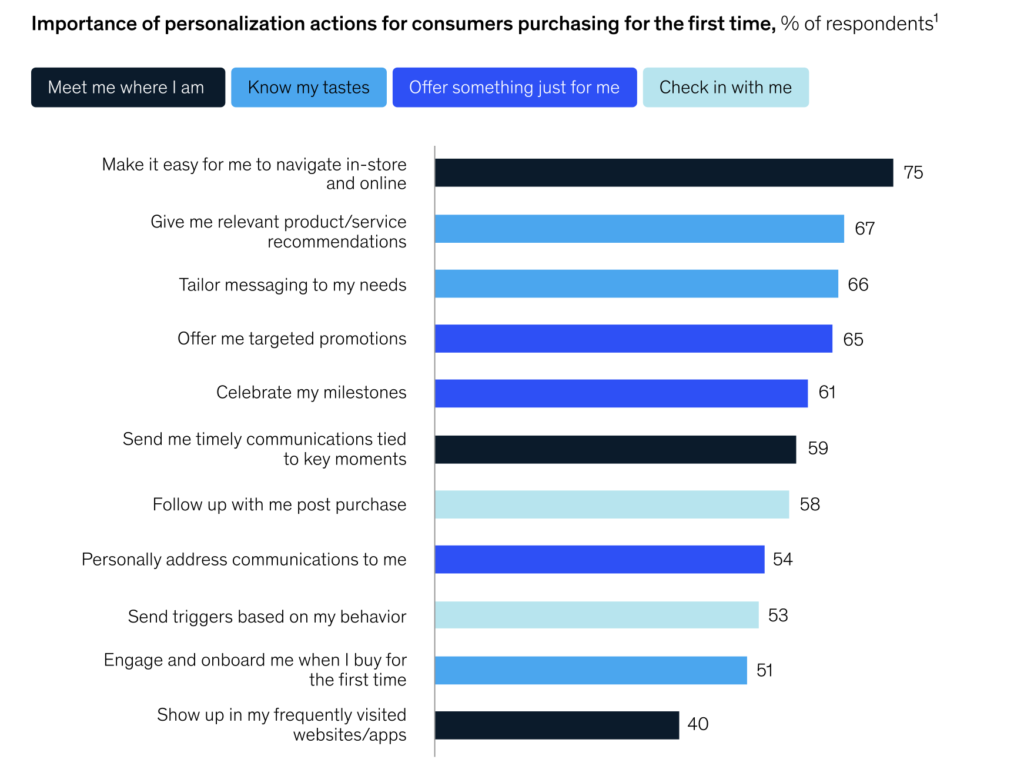In 2021, retail ecommerce sales amounted to nearly $4.9 trillion worldwide. Yes, trillion. And it’s not stopping there. This figure is forecast to grow by 50% over the next four years. The industry has boomed and shows no sign of slowing, let alone leveling off.
Online retail has increased dramatically due to advances in digital technology. Getting the right tech stack can make or break a retailer, but the number of options can be overwhelming.
Read on, and we’ll introduce you to the most important tools ecommerce businesses need to reach their marketing goals in the digital age.
Why ecommerce businesses should invest in a tech stack
With the ecommerce industry more saturated than ever, businesses need to be on their A-game. The right tech stack can help businesses improve efficiency, automate time-consuming processes, and establish a lean supply chain.
This enables brands to enhance customer satisfaction. This may be via solutions such as automated order tracking, returns management, or visibility into the last-mile delivery process.
20% of customers wouldn’t re-order with a brand that didn’t offer order tracking, so it’s easy to understand why businesses should invest in a tech stack that can help automate these processes.
Source: Sendcloud
What is an ecommerce marketing tech stack?
A technology stack is a collection of applications, frameworks, and other solutions needed to run and/or manage a business. Put simply, it’s a collection of tech that makes things easier.
An ecommerce marketing stack, or martech stack, is a collection of tech that optimizes the digital experience for both business and consumer. These technologies will make difficult processes easier, while measuring the impact of marketing activities and ultimately driving efficient spending.
Ideally, your stack should complement your audience, products, and team.
Essential tools you should have in your ecommerce marketing tech stack
Building an effective marketing tech stack for your ecommerce store will come down to choosing the best tools. These tools can easily be categorized into the following areas:
1. Tools to attract
As lead generation continues to become more competitive, there are a number of tools on the market that can make generating traffic significantly easier.
2. Tools to engage
What use is traffic if we’re unable to then convert those leads? Similarly to the competition of the lead generation landscape, consumer expectations are also higher than ever. Customer experience needs to be optimized once you’ve got visitors on your website and there are tools available to help you do this.
3. Tools to analyze and optimize
Marketing is a continual cycle of develop, execute, analyze. By understanding the impact of what you’ve done in the past, you can move forward in the most effective way.
Most modern-day ecommerce businesses will need to consider utilizing software or tools in each of these areas to optimize their business. Unfortunately, there’s no one-size-fits-all approach. Different businesses will require different tools and different areas of focus. The most commonly utilized include:
Advanced analytics
Knowledge is power when it comes to your business. Knowing your customer is vital if you want to grow your business and sustain growth.
Tools such as Google Analytics allow you to collect, organize, and analyze customer data. It can also provide convenient, customizable dashboards for quickly reading and understanding your customer data, so you can quickly put it into action.
Google Analytics allows you to understand your customers wants and needs, and therefore better target them. Put simply, it can allow you to understand:
- Where your customers are coming from
- How they found you
- What they were interested in
- How long they were interested in it for
This combination provides insight into your buyer journey and personas, and presents data-backed optimization opportunities.
Personalization engine
As the digital landscape continues to grow in complexity, if you aren’t offering a personalized experience to consumers, your days are numbered.
Ecommerce personalization software helps you create a tailored product based on each customers’ wants, needs, and buying preferences. It captures relevant user behavior and data across multiple channels in real time to offer personalized messaging or recommendations.
This can open the flood-gates to improving the customer experience, for example with automated, data-backed suggestions from a virtual agent.
Customer relationship management
Having a robust customer relationship management (CRM) system in place is a must for any ecommerce business. In its simplest form, it helps manage customer data.
Modern customer journeys are not linear. They’re less predictable than ever, with various touch points across multiple channels. CRM systems, such as Microsoft Dynamics 365, are vital to combine data and create clear pictures of customers.
From contact center integrations to purchase history or social media interactions, all touchpoints can be stored under one customer profile. This profile can include descriptive and behavioral data from your customers, that can then be used to better inform marketing communications personalized to the customer.
There’s a reason that the CRM market is continuing to grow at a steady rate. It works.
Product information management
Product information management (PIM) is the management of all of the data, content, and other materials needed to market and sell your products.While there are many different ways to approach this, PIM software can help streamline processes by creating a single source for all those resources. This allows them to be easily maintained and accessed by different stakeholders.
Product lifecycle management
Product lifecycle management (PLM) is the management of manufacturing workflows from start to finish. Software such as Odoo MRP connects and organizes those involved throughout the life cycle, from the designer to the end consumer.
This isn’t necessary for all ecommerce brands. For approaches such as dropshipping or re-selling this won’t be a priority. It is, however, a must for any businesses that also manufacture their own products.
Payment processing gateways
Most modern website builders will have integrated payment processing.
A payment processing gateway does what it says on the tin – it allows you to accept payment from customers. Without payment, you’ve no business, so it’s something you need to get right.
We recommend going with the big dogs and sticking to well-known players such as Paypal. With over 361 million users on the platform and a steady growth rate, it’s a trusted solution.
The graph below shows the number of PayPal’s total active user accounts from 1st quarter 2010 to 3rd quarter 2021 (in millions).
Order and logistics management
As the demand for a multi-channel retail presence grows, keeping inventory up to date across all of them can be challenging. Inventory and order management tools, such as Sendcloud, work to consolidate cross-channel sales and inventory data.
These tools can automate processing, fulfilling, and shipping your orders across various channels.
Workflow automation
Workflow automation is simply a way for businesses to streamline their processes.
Businesses will look to identify repetitive tasks or any manual process that could be better handled by software, apps, or tech. Rather than wasting valuable manpower, technology does the work.
Tools such as Processmaker allow users to design, execute, manage, and optimize processes. The end result is an increase in operational efficiency, happier staff, and improved customer engagement.
Multichannel listing
With advances in digital technology, new e-commerce trends and channels are constantly emerging.
It’s vital that businesses optimize their data and distribute it to the many retail platforms on the market. This is no mean feat. It is, however, made easier by the use of multichannel listing software.
Tools such as Sellbrite can automate the process of ensuring product data is compliant with the requirements of different channels. It can then distribute the content, keeping product data accurate and up to date across each one.
Shopping cart software
Is an online store even an online store without a shopping cart? Maybe, but it won’t be a good one.
Shopping cart software enables a seamless buying experience for their customers. Customers can select items that interest them, input payment and delivery information, and see a breakdown of all associated fees.
Customers can easily be turned off by a poor shopping cart experience, with almost 80% of customers abandoning their cart in March 2021. Thankfully, most modern e-commerce platforms such as Shopify have this function built in.
Email marketing
99% of email users check their inbox every day, with some checking it 20 times daily. With that being said, the average email open rate sits at less than 17%. Customers need personalized, targeted communications hitting them at the right time, or you may as well not send one.
Email marketing software can help. Long gone are the days of manually sending emails to your email databases.
Tools such as Mailchimp allow you to strategically create and release content. By using data based on customer behavior, the software can segment your audience and create an email that everyone will open. These tools offer an easy solution to create aesthetically pleasing emails that can land at exactly the right moment.
Things to consider when creating your ecommerce marketing tech stack
An ecommerce marketing stack can optimize the digital experience for both business and consumer, but only if built with your customers, your products, and your goals in mind.
Before you throw money at tools you may not need, consider the following:
1. Your customers
Consider the needs of your customers before you start building your stack. What experience would they want? 67% of first-time consumers want relevant product recommendations. Do you know what your customers want? Consider conducting a customer survey to better understand.
Source: McKinsey
2. Your products
Similarly, consider which technologies would fit best with your products. Your marketing tech stack should make it easier to browse your products and help your audience find what they want. This will differ based on your product range.
3. Your goals
At the end of the day, what do you want from your business? Do you seek to be a six-figure ecommerce empire or a small business known for exquisite customer experience?
There’s no wrong answer, but there is a wrong tech stack if you don’t consider what that answer is.
Key questions to ask before building your tech stack
We know what an ecommerce marketing tech stack is.
We know the benefits of having a robust one in place.
We’ve got a list of tools and solutions that could be game changers for your brand. But realistically, we need to consider the implications on your existing business.
Before making any changes to your tech stack, ask yourself the following:
- Will your new tools be able to integrate with your existing tools?
- Have I done my research well?
- How will it deliver results?
- Do I have enough resources and manpower to handle these tools?
- What do my team and other departments think about these tools and how they fit into each team’s needs?
Technology is tricky, and a tool that works as perfectly as a CRM system will not always talk to your existing email marketing platform. If you can’t utilize your new wonderful customer data to market to them – it’s not the right choice.
Similarly, advancements in technology mean certain tools can yield incredible results. But they also may require incredible skills to be able to navigate them. If you don’t have the manpower or your staff don’t like the tool, you’re also at a sticking point.
An ecommerce marketing stack can optimize the digital experience for both business and consumer, but only if it’s built with your customers, products, and goals in mind.
About the author:
Grace Lau is the Director of Growth Content at Dialpad, an AI-powered cloud communication platform for better and easier team collaboration. She has over 10 years of experience in content writing and strategy. Currently, she is responsible for leading branded and editorial content strategies, partnering with SEO and Ops teams to build and nurture content. Grace has written for domains such as VirtualVocations and UpCity. Here is her LinkedIn.




















